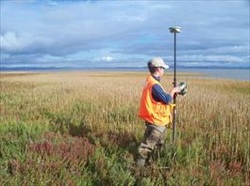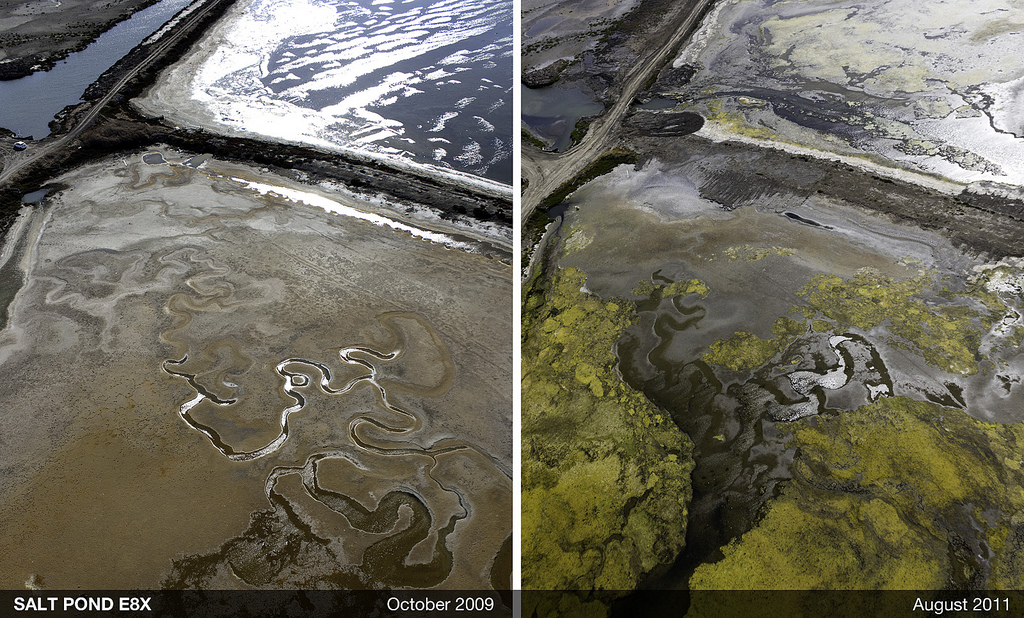Scientific Monitoring

[16] USGS scientist monitoring a salt pond
United States Geological Survey (USGS) scientists, led by Laura Valoppi, are heading the scientific monitoring of the restoration project. Currently the scientists are studying sediment transport throughout the bay, habitat change, sea level rise, and the mercury contamination in the bay waters. Their findings will guide the project’s adaptive management plan [16]. Click here to learn more about the USGS monitoring projects at the San Francisco Bay Salt Ponds
Sediment Monitoring
Scientists are monitoring the sediment dynamics in the South Bay as they change during the restoration. They are addressing two major questions: (1) if there is enough sediment to support marsh habitat and (2) how sediment dynamics will affect flood danger. It is possible that in the future, flood hazard in the Bay Area will increase because of the change in sediment flow due to restoring salt ponds to tidal marshes. Monitoring the changing sediment dynamics will give scientists a better understanding of its effect on the restored ecosystem and the possibility of increased flood hazard. [17].
Habitat Change
Historically, migratory and breeding shorebirds have used the salt ponds for foraging and as nesting sites. Converting salt ponds to tidal marsh reduces the habitat required for migratory and breeding shorebirds. The ecosystem changes are being monitored to understand their effect on these birds. Nesting sites are also being monitored to understand how birds utilize this new habitat [17].
In addition, it is not known how the changing habitat due to restoration will affect non-bird species. Specifically, scientists want to know if the conversion of salt ponds to salt marsh will bring unwanted predators that will pose a threat to endangered or threatened species [17].
Sea Level Rise
By 2100, scientists estimate that there will be a 2˚ C (3.6˚ F) increase in the average global temperature. Increasing global temperature will continue to cause sea level rise through the melting of polar ice sheets and glaciers. USGS scientists collect elevation and sediment data to create a model that will show the possible effect of rising sea levels on the newly created marsh habitats [16].
Mercury Contamination

[18] Caspian Tern
The gold rush caused methylmercury contamination (the most toxic form of mercury) in the San Francisco Bay. It is possible that restoring the salt ponds to tidal marshes will increase the amount of methylmercuy available to organisms in the bay waters. Already, scientific studies have shown that the concentration of mercury in waterbirds in San Francisco Bay wetlands are higher than the threshold level which negatively impacts bird reproduction. A further increase in mercury will continue to reduce the reproductive success of the endangered and threatened birds nesting in the San Francisco Bay. The USGS is monitoring the amount of mercury in the South Bay to estimate the effect restoration will have on mercury contamination in the marsh [16].

